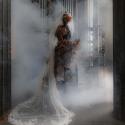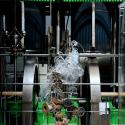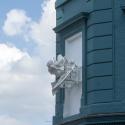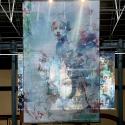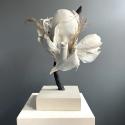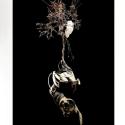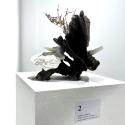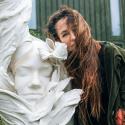Discipline
Architectural / Monumental / Relief
Figurative / Realism
Installation
Land Art
Other
Material
Brick/Concrete/Plaster
Ceramic/Clay
Found Objects
Metal (other)
Mixed media
Wood
Region
London
South West
Biography
Bio
Dr Jasmine Pradissitto FRSA, FLIS is an award-winning London-based British artist, scientist, academic, and speaker who has a Ph.D. in physics from UCL and has studied art at Goldsmith’s. A ‘Renaissance Woman’ her transdisciplinary practice spans painting, sculpture, and technology and for the last 8 years, she has been pioneering a newly developed ceramic material that absorbs nitrogen dioxide (NOx) pollution from the air. Pradissitto has exhibited worldwide and has installed two public art projects in London for The Horniman Museum Gardens (winner of Museum of the Year Award 2022) and Camden People’s Theatre with Euston Town, a Mayor of London environmental initiative (People’s Pioneering Environmental AWARD 2021). Her work based on future innovations (and new modes of thinking), cross-fertilised with the traditional, is less about the narrative of our past planetary ingressions and more about our symbiotic adaptation to a post-industrial, anthropogenic world; something she explored in 2025, as part of her first museum solo show at The London Museum of Water & Steam curated by Richard Hore:
‘Tender Machines: Holding Paradox’.
Statement
My practice sits at the intersection of sculpture, science, and ecological philosophy, where art is a hopeful intervention, rather than a sad reflection of a history of industrial progress at the cost of environmental degradation. Many of my works are designed to decay or shift over time as a deliberate move away from the tradition of monumental, highly finished works. Some are in pioneering new materials. These works are often site-specific and materially active. Sound, plant matter, pollution absorbing ceramic, metal, concrete, and industrial machinery reimagined as ecological collaborators, embracing decay, fragility, entropy and transformation as part of a sustainable practice. Nature does not build for eternity. The bodily forms I include are there to remind us that far from being the center of the universe, we are just one of the many nodes. It’s why I dislike the term ‘environmentalist’ and prefer Holobiont- one amongst many, taken form Greg Albrecht’s writing on a new language for a new time. My work has been exhibited both here and internationally, and recent projects have focused on collaborations funded either by The Mayor of London or The National Lottery Heritage Fund. Making sculpture I see in the same way; a collaboration of materials and processes and things collected over the years: a meeting point of disciplines.
My inspiration after 3 decades has been from artists, thinkers, scientists, poets and writers who reject binary distinctions between destruction and beauty, industry and ecology. Anselm Kiefer’s monumental use of ash, straw, and lead resonate with ruin as an active state, not an end. Similarly, the aerial perspectives of Edward Burtynsky, reveal the sublime terror of human impact on the land, the industrial sublimation of progress. Returning to ‘us’ I refer to the difference types of attention and neurological dualities written about by Dr Iain McGilchrist. With Tender Machines, it was the spiritual defiance in William Blake’s ‘of Innocence and Experience’ as well as Haeckel’s beautiful paintings and Dickens’ moral clarity. Central to my practice is the core belief that art, and the three dimensional because it embodies us, is a medium of healing and symbiosis.
Sculpture, to me, is no longer about the production of static form. It is about the activation of space and matter in ways that provoke attention and repair, whether that is environmental, philosophical, or societal. By incorporating materials that actively clean the air and embedding the botanical, I aim to move beyond metaphor into action participating in ecological dialogue rather than simply referencing it. Sustainability is integral. Through pieces such as The Eternal Ephemera of the Mechanical Bride and The Seraphic Rooting of the Mothership 2025 are invitations, bridges between collapse and hope, between the Anthropocene and what I believe must follow: the Symbiocene, a world re-rooted in wisdom and entangled coexistence.
In Tender Machines, a site-responsive collection of large-scale hangings, hybrid sculptures, and soundscapes situated within a Victorian museum/pumping station, I explore how sculpture can participate in, rather than represent, cycles of renewal. These works inhabit a space where the remnants of the Industrial Revolution, pistons, pumps, and rusted centrifuges, are reanimated not as relics, but as collaborators. They hum, corrode, and coexist with mycelium, moss, ceramic, pigment, and sound, becoming vessels in an evolving conversation between humanity, machine, and the Earth.
I am becoming increasingly interested in how art can operate outside the gallery context, integrated into civic, post-industrial, or ecological spaces acting as both artefact and agent in shaping a more sustainable, meaningful future.
